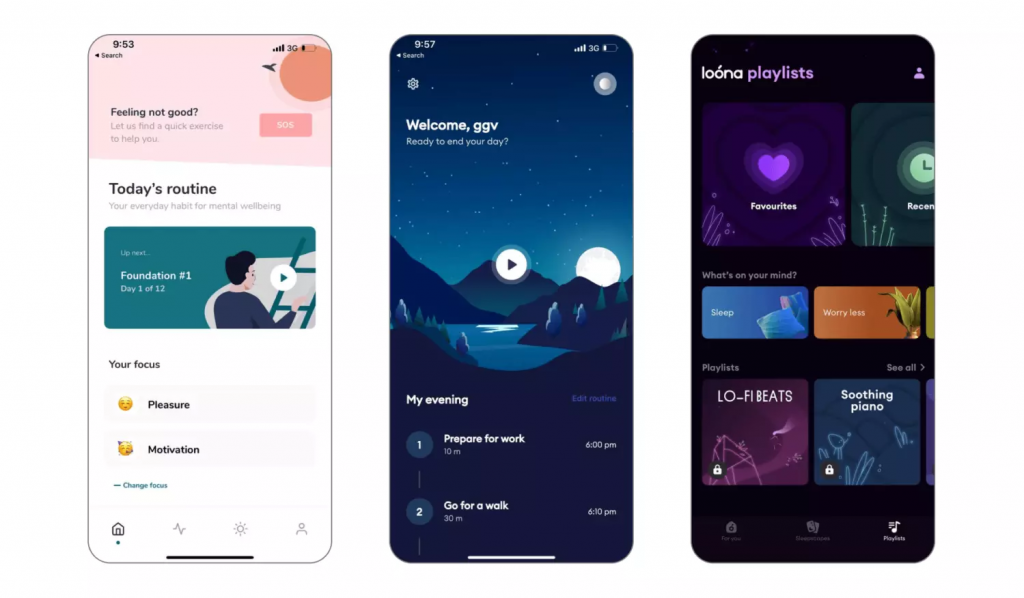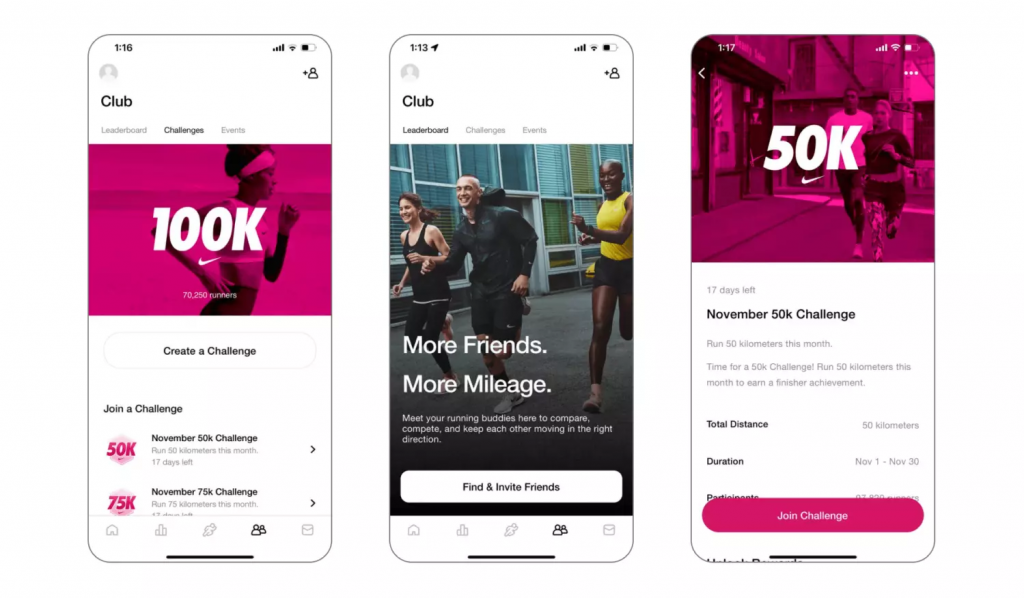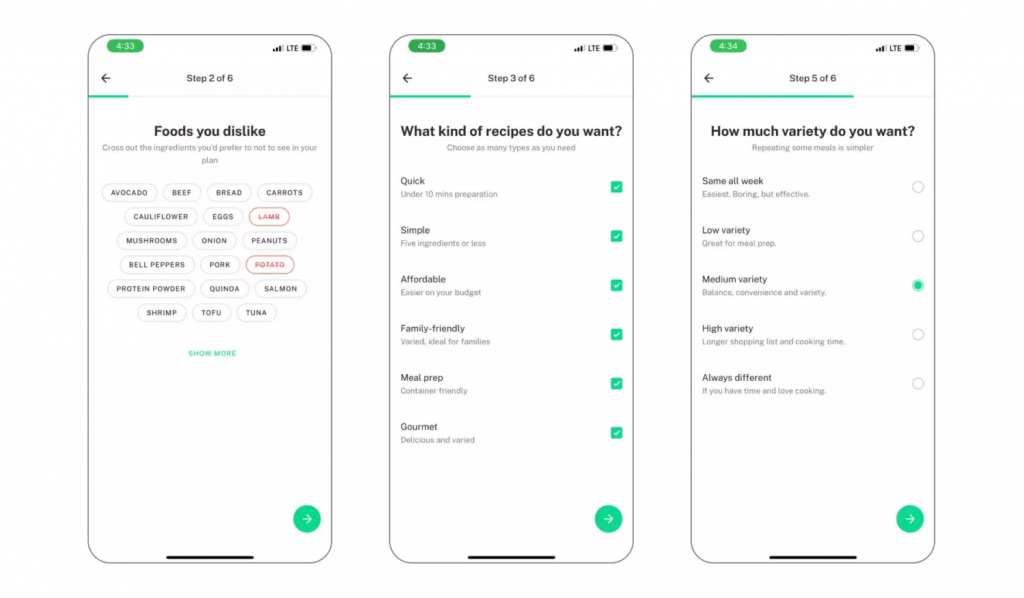With the rapid growth in the number of products on the market, it becomes more difficult to compete in the mobile industry every year. How can you stand out from the ever-growing number of such similar apps? Product design and UI/UX play a huge role here.

So, here are the 3 core principles of UX we have defined based on the analysis of the Health & Fitness market – Involvement, Trust, and Emotion. And today we dwell on the ways to implement these principles. They can be used not only in the Health & Fitness industry but also in mobile applications in general.
Emotions
Imagine that you take advantage of a Mercedes rental in Dubai and drive in it with your loved one through the sunny city. What causes it in you? That’s right, emotions. It’s the same with apps – you just need to evoke the right emotions to make users fall in love with your product.
What can help with this?
1. Illustrations and animations. Big brands like Airbnb and Google have incorporated illustrations into their minimalist and functional interfaces for over a decade because they definitely grab attention and appeal to users.
Illustration properties:
- Ability to communicate. Illustration can reflect the emotions of users, express empathy, and be happy about their success.
- Transmission of brand value. Illustrations help to articulate and communicate brand values on a non-verbal level to users.
Thus, illustrations and animations help not only make an application visually attractive but also do something more – tell the story of the brand and evoke emotion.

2. Invisible interaction experience. It’s about little interactions and tricks that help make the app more human.
- Tactile feedback. For example, vibration-based relaxation techniques help release tension even more effectively. Together with the sound meditation, the phone will vibrate.
- Sound design. Sound enhances the sense of presence and helps to create a special atmosphere in the application.
It is believed that the most powerful aesthetic pleasure can be achieved by acting on 3 or more senses. Thus, the right combination of visuals, sounds, and tactile feedback will make the user experience an unforgettable experience.
Involvement
It is one thing to convince people to download your mobile application, it is another thing to get them interested, and an almost impossible mission is to involve users in the long-term use of the product.
But there is a trend that is evident across all industries, motivating users to take meaningful actions over and over again – gamification.
If you carefully analyze the statistics of the most popular categories in the App Store, you can easily see that the first lines of the rating are occupied by Games.
Unsurprisingly, gamification is being introduced into other products as well. Previously, it was most often used in e-learning applications (for example, Duolingo).

Now gamification is actively used not only in e-learning but also in fintech, productivity, and health & fitness apps.
Why is gamification becoming so popular in Health & Fitness products? Because the element of the game encourages users to learn new skills and healthy habits in an easy and fun way.
What elements of gamification do H&F apps use?
1. Points, badges, and other types of awards. Users can receive these rewards for certain actions in the application. In the future, they can exchange their rewards for something else (additional functions, “lives”, new content, improvements to your character, and other benefits). Some apps even use “real” rewards like in-store discount coupons (like Mango Health).
2. Competitions with friends and leaderboards. Things get easier with a partner. You can support each other while completing assignments. Moreover, competing with someone gives users additional motivation to take up the challenge and win.

3. Graphs of progress. These charts show your progress compared to previous results. It is important for a person to see the progress of how he goes to the goal, as well as to see some intermediate results.
4. Content in a playful way. Apps transform the experience of content in the form of a real game, dividing it into small modules for easier learning. All content is structured in levels from the simplest to the most difficult.
Thus, a fun form of play actively motivates a person to achieve their goals. And it works because the human brain is constantly looking for new challenges.
Trust
Trust is a fundamental element in Health & Fitness. Brands compete to win the trust of users and come up with a unique solution that solves their problems.
Ways to build trust among users:
1. Content personalization. The simplest example is a personalized greeting like “Good morning, Robert” that appears on the main screen after users’ registration.
One of the best examples of how effective personalization can be is the popular health and fitness app 8fit. This product raised $7 million in the first round of financing through a personalized approach to developing services such as providing customized workout and nutrition plans.

2. Social proof. Is closely related to the concept of trust. Something new is always suspicious. Before making a purchase, we always read reviews and look for confirmation that people like this product.
There are 2 types of evidence used in applications:
- Positive stories from app users.
- Lists of expert authors.
Final word
The mobile app industry is booming today. As of the first quarter of 2021, the App Store had over 2 million apps, according to Statista. This is a huge figure because back in 2008 the store had only 500 applications.

